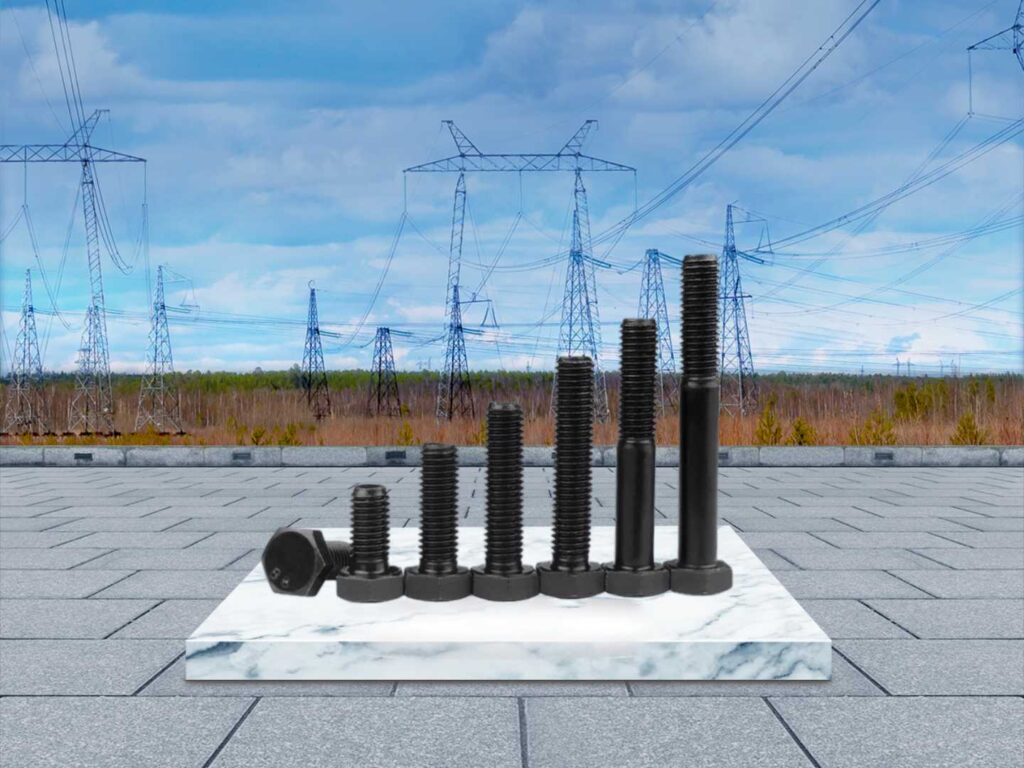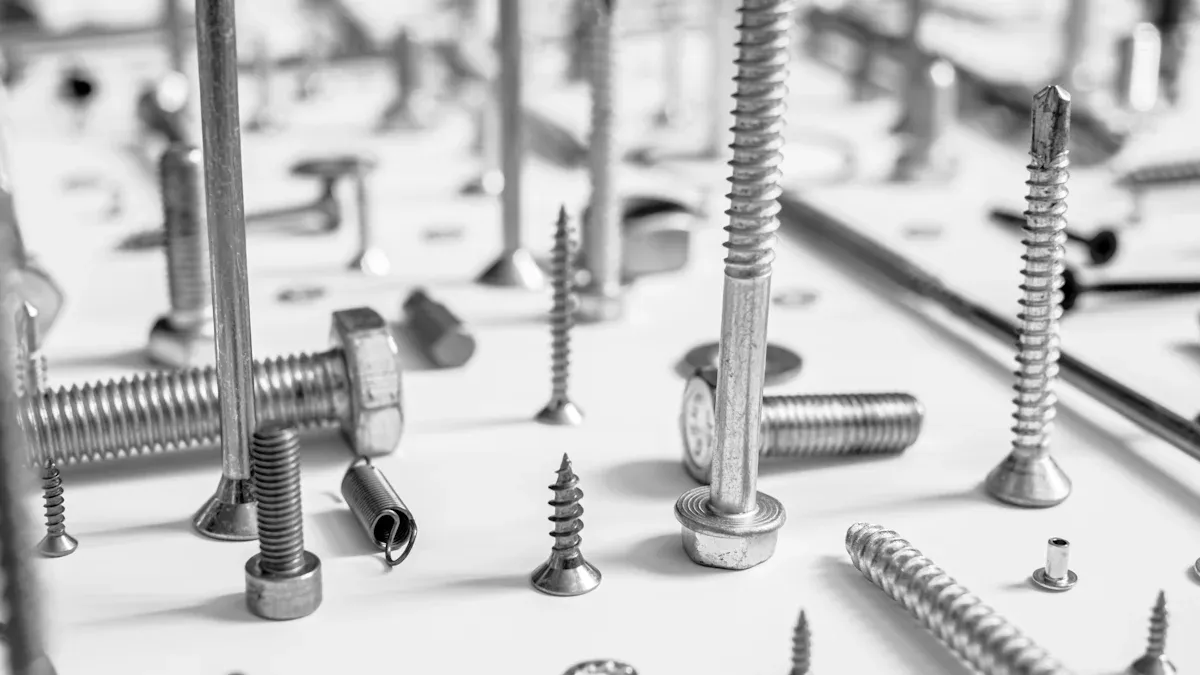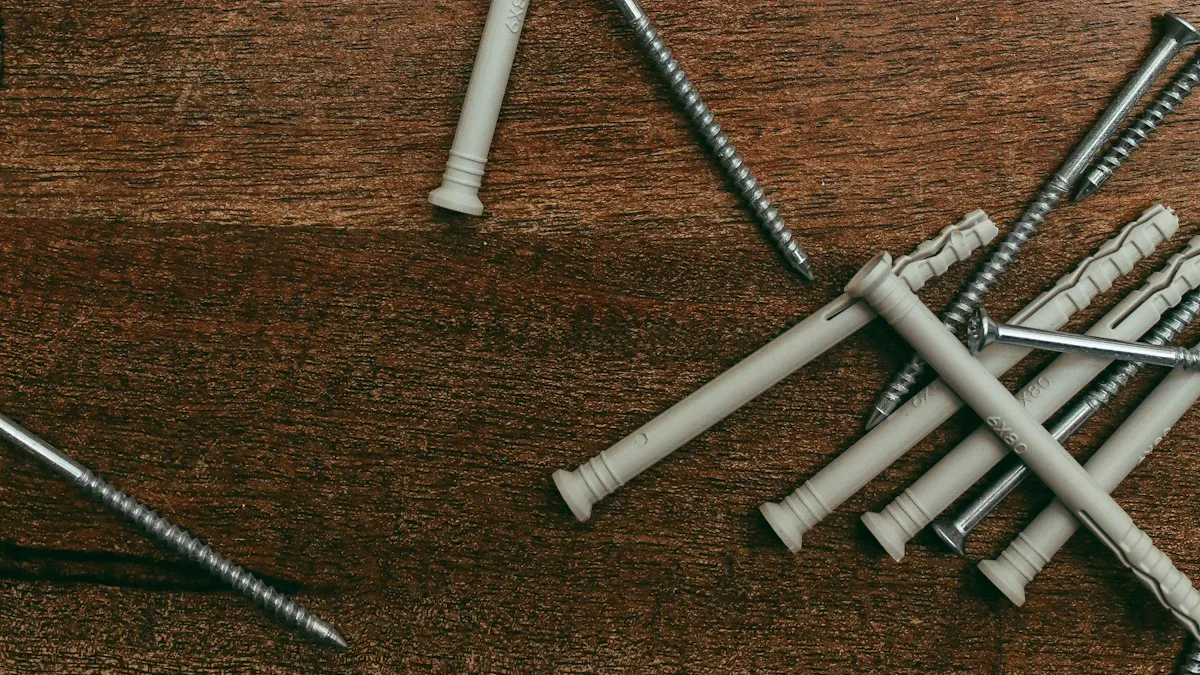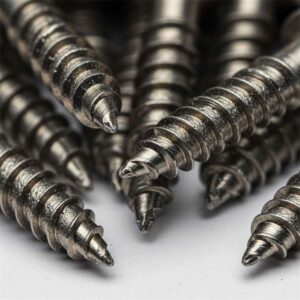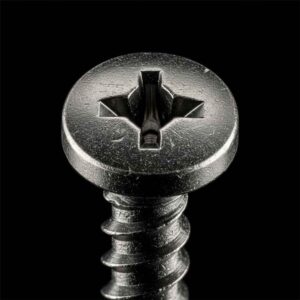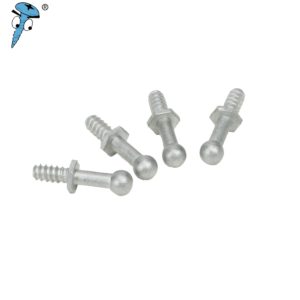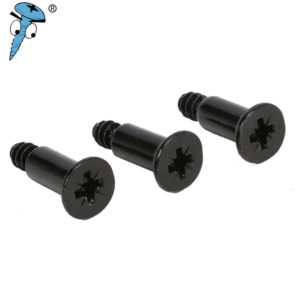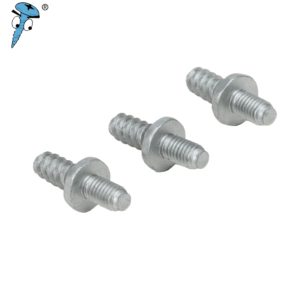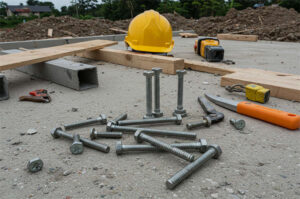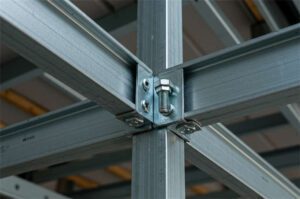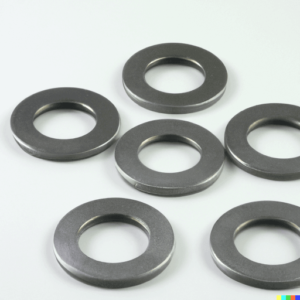When you pick a shoulder bolt or a standard bolt, you affect how your project works. A shoulder bolt is also called a precision shoulder screw. It has a smooth, exact shoulder. This shape helps you line things up right and lets parts move in a controlled way. Standard bolts have threads all the way down. People mostly use them to hold things together. Engineers use shoulder bolts in machines, robots, and cars. They give strong support, stop shaking, and help with careful work. Standard bolts are good for basic jobs but do not help with movement or lining things up.
Key Takeaways
- Shoulder bolts have a smooth part called a shoulder. This lets parts turn or slide easily. They are good for jobs where things need to move.
- Standard bolts have threads all the way down. They make strong and steady connections. These bolts do not let parts move.
- Pick shoulder bolts for machines, robots, or cars. Use them when you need things to line up or move. Use standard bolts for building or regular fastening jobs.
- Always use washers with bolts. Washers spread out the force and keep surfaces safe. This helps make the connection strong and safe.
- When picking eye bolts, think about how much weight they hold and what they are made of. Shoulder eye bolts work better for pulls at an angle. Regular eye bolts are best for straight lifts.
Shoulder Bolt Overview
Design Features
Shoulder bolts look different because of their shape. They have three main parts. There is a head, a smooth shoulder, and a threaded end. The head can be cap, flat, or hex-shaped. Some heads have a rough texture for better grip. The shoulder is between the head and threads. It has a set size to help line things up. The threaded end follows UNC or UNF rules. You can find different drive types like hex socket or slotted. These things make shoulder bolts easy to spot.
- Head types: cap, hex, flat, low profile
- Shoulder: smooth, precision tolerance
- Threaded end: coarse or fine thread
- Drive types: hex socket, 6-lobe, slotted
Functions
The shoulder on a shoulder bolt is important. It works as a pivot point in machines. This lets parts turn smoothly around the bolt. The wide shoulder spreads out weight. This helps stop stress on the parts. You get more strength and longer life in your build. The smooth part lowers friction, so moving parts last longer. Using shoulder bolts helps parts line up every time.
Tip: The shoulder part acts like a strong bearing surface. It helps spread weight and lowers friction.
| Feature | Description |
|---|---|
| Load Distribution | The wide shoulder spreads weight and lowers stress on parts. |
| Smooth Rotation & Sliding | Good for jobs that need turning or moving, like pulleys, bearings, or linkages. |
Applications
Shoulder bolts are used in many fields. In cars, they help with engines and body parts. Airplane makers use them for important parts. Electronics builders use them for tricky designs. Big machines need shoulder bolts for strength. You also see them in robots and molds. Each job needs the bolt to hold weight, keep things lined up, and let parts move.
- Automotive: engine assembly, transmission systems, bodywork
- Aerospace: structural integrity, safety of aircraft
- Electronics: consumer and industrial equipment
- Industrial machinery: high-strength fastening, durability
- Robotics and automation: precise movement and alignment
- Injection molds: smooth sliding and pivoting
Shoulder bolts can work with eye bolts. This helps when you need movement and a strong hold. Eye bolts and shoulder bolts make pivot points or anchor spots in machines.
Standard Bolt Overview
Design Features
You see standard bolts in many projects because they have a simple and strong design. Each bolt has a head, a threaded shaft, and a tip. The head comes in shapes like hex, square, or round. The shaft has threads that run from the head to the tip. These threads help you fasten materials tightly. You can use tools like wrenches or sockets to turn the bolt. Standard bolts work well with nuts and washers. You find them in different sizes and grades. ASTM A325 bolts are common in steel construction. SAE Grade 5 bolts fit machinery and equipment. These bolts offer strength and durability for many uses.
Functions
Standard bolts help you join two or more parts together. You use them to hold wood, metal, or plastic in place. The threads grip the material and keep it from moving. You can tighten or loosen the bolt when you need to adjust or repair something. Standard bolts do not allow movement between parts. They give you stability and keep everything secure. You rely on their strength to handle heavy loads. These bolts resist bending and breaking. You get durability in tough conditions. Eye bolts work with standard bolts when you need to lift or anchor objects. Eye bolts add a loop for ropes or cables, making lifting safer.
Tip: Use washers with standard bolts to spread the load and protect surfaces from damage.
Applications
You use standard bolts in many applications. Construction workers use them to connect steel beams and columns. These bolts form the skeleton of buildings and bridges. You see anchor bolts in concrete to hold construction elements in place. Railway and highway crews use bolts to secure tracks and guardrails. This keeps infrastructure safe and strong. Eye bolts play a role in lifting and securing loads. You find eye bolts in warehouses, factories, and shipping yards. They help you move heavy items with cranes or hoists. Standard bolts and eye bolts work together in many applications to provide strength and durability.
| Application Type | Description |
|---|---|
| Steel Framework | Used to connect beams and columns, forming the skeleton of buildings and bridges. |
| Concrete Anchoring | Anchor bolts embedded in concrete provide a secure base for construction elements. |
| Railway and Highway | Secures tracks, guardrails, and other components, ensuring safety and durability in infrastructure. |
- ASTM A325 bolts are common for structural steel connections.
- SAE Grade 5 bolts are preferred for machinery and equipment fastening.
- Eye bolts are used for lifting, anchoring, and securing loads in many applications.
- You find eye bolts in construction, manufacturing, and transportation.
- Eye bolts work with standard bolts to improve safety and efficiency.
- Eye bolts provide a reliable way to handle heavy loads.
Shoulder Bolt vs Standard Bolt
Key Differences
When you pick a shoulder bolt or a standard bolt, you should think about how each one works. A shoulder bolt has a smooth, round part between the head and threads. This part acts like a bearing surface. You use it when you want parts to move or slide easily. Machines that need parts to turn or line up use shoulder bolts. The shoulder helps spread weight and lowers wear.
A standard bolt has threads all along its shaft. You use it to hold two or more things together tightly. Standard bolts do not let parts move. They give you strength and keep things steady. You see standard bolts in buildings, machines, and other places.
Note: Shoulder bolts, also called stripper bolts, are used when you need parts to turn or slide. Standard bolts are best when you want things to stay still and safe.
You should also think about how strong the bolts are and how often they might break. In tough jobs, picking the right bolt matters a lot. Some bolts break more if they get tiny cracks or are made with weaker materials. Other bolts last longer because they are made better. Always check the rules for each bolt type. Rules like ISO 898-1:2013 and ISO 8765:2022 help you choose the right bolt.
Eye bolts are another kind you might use. They have a loop at one end. You use eye bolts to lift, anchor, or guide cables. You often see eye bolts used with both shoulder bolts and standard bolts. Eye bolts help you move heavy things safely and keep them in place.
Here are the main things to remember:
- A shoulder bolt has a smooth part for turning or sliding.
- A standard bolt has threads for tight holding.
- Shoulder bolts are best when you need movement or lining up.
- Standard bolts give you strength and keep things steady.
- Eye bolts help with lifting and anchoring in many jobs.
Comparison Table
This table helps you see how shoulder bolts and standard bolts are different:
| Feature | Shoulder Bolt | Standard Bolt |
|---|---|---|
| Shoulder | Smooth, round, acts like a bearing surface | Not there |
| Threading | Threads only at the end | Threads all along |
| Functionality | Lets parts turn, slide, and line up | Holds parts tight, no movement |
| Applications | Used in machines, robots, cars, planes | Used in building, machines, general |
| Strength | Good for spreading weight and movement | Good for holding things steady |
| Eye Bolts Compatibility | Used together for turning or anchoring | Used together for lifting/anchoring |
| Technical Standards | ISO 898-1, ISO 8765, ISO 8839, ISO 8992, ISO 898-5 | ISO 898-1, ISO 8765, ISO 8839, ISO 8992, ISO 898-5 |
Tip: Always pick the bolt that fits your job. If you need parts to move, use a shoulder bolt. If you need parts to stay still, use a standard bolt. For lifting or anchoring, add eye bolts.
Choosing the Right Bolt
Selection Factors
When you pick a bolt, you need to think about a few things. The bolt must fit your project and keep it safe. Picking the right bolt helps you avoid trouble. It also keeps your tools and machines working well.
| Factor | Description |
|---|---|
| Customization | You can change shoulder bolts’ length, diameter, thread size, and material for your job. |
| Enhanced Functionality | Custom shoulder bolts have features that help in special jobs. |
| Improved Durability | These bolts are strong and steady, so they do not break easily in hard places. |
| Precision Engineering | Exact sizes make sure the bolt fits tight and works right. |
Think about where you will use the bolt. Some bolts work better in certain places. Stainless steel bolts are best if there is rust or water. Carbon steel bolts are good for dry places with no rust. The finish on the bolt matters too. Finishes that stop water help bolts last longer. Finishes that stop heat or cold protect bolts from temperature changes. Chemical finishes keep bolts safe from harsh chemicals.
| Material | Environmental Suitability |
|---|---|
| Stainless Steel | Best for places with rust or water |
| Carbon Steel | Good for dry places with no rust |
| Finish Type | Protection Offered |
|---|---|
| Moisture Resistant | Helps bolts last longer in wet places |
| Temperature Resistant | Keeps bolts safe from heat or cold |
| Chemical Resistant | Protects bolts from strong chemicals |
Some bolts use special materials like Chromium-Molybdenum steel or Inconel®. These are extra strong and do not rust easily. They work well in tough jobs. You can trust them even when things get hard.
If you are lifting or rigging, safety is very important. Eye bolts are used a lot for these jobs. Pick the right eye bolt by checking how much weight it can hold, what it is made of, and how you put it in. The right eye bolt keeps your team safe and stops accidents.
Tip: Always check how much weight an eye bolt can hold and what it is made of before using it for lifting. This keeps your tools and people safe.
Practical Tips
There are some easy tips to help you put bolts in the right way. These steps help you avoid mistakes and keep things working well.
- Tighten shoulder bolts with the right amount of force. Too much force can break the thread neck, which is the weakest part.
- Put oil or grease on the threads and under the head. This makes it easier to tighten the bolt and lowers friction.
- About half the force you use goes to fighting friction under the head. A third of the force fights friction in the threads.
- Know how much friction the nut has. This changes if the bolt is dry, oily, or rusty.
- Use oil or grease for machine-screw jobs. This helps the nut last longer and keeps things safe.
- Always use washers with bolts. Washers spread out the force and protect surfaces.
- Check bolts often for damage, rust, or if they are loose. This keeps your lifting and machine jobs safe.
- Change bolts based on how much you use them and how hard the job is. If you use them a lot or in tough places, check them more often.
| Mistake | Consequence |
|---|---|
| Picking the wrong length | The bolt can come loose and hurt machines |
| Not tightening enough | The bolt can break early |
| Not thinking about side force | The bolt can break when loaded |
| Forgetting about heat or cold | Parts can get damaged if they do not line up |
Safety Alert: Always check bolts and eye bolts and put them in the right way. This helps stop accidents and keeps your machines safe.
Always use the right bolt for your job. If you need parts to move or line up, use a shoulder bolt. If you need things to stay tight, use a standard bolt. For lifting, use eye bolts. Picking the right eye bolt makes lifting safer and your job easier.
Shoulder Eye Bolt and Regular Eye Bolt
Difference Between Shoulder Eye Bolt and Regular Eye Bolt
You may wonder how a shoulder eye bolt is different from a regular eye bolt. Both help you lift or hold things, but they are not the same. A shoulder eye bolt has a thick shoulder between the eye and the threaded shaft. This shoulder gives it more strength and support. You can use a shoulder eye bolt for straight pulls or pulls at an angle. It can handle side loads without bending or breaking. A regular eye bolt does not have a shoulder. It works best for straight, up-and-down lifts. If you pull at an angle, a regular eye bolt might bend or break.
Here is a table that shows the main differences:
| Feature | Shoulder Eye Bolt | Regular Eye Bolt |
|---|---|---|
| Design | Has a reinforced shoulder | No shoulder, just a looped head |
| Load Type | Handles vertical and angular loads | Only for vertical loads |
| Durability | More durable, resists bending | Can bend under side loads |
| Usage in Rigging | Good for complex rigging and hoisting | Only for simple, straight lifts |
| Applications | Used in heavy-duty lifting, construction, machinery | Best for light to medium securing |
| Risk of Failure | Low risk under side loads | High risk under angled forces |
| Material Options | Stainless, carbon, alloy steel | Mild, stainless, galvanized steel |
| Cost | Slightly more expensive | More affordable |
| Installation Method | Needs precise alignment | Easier to install |
| Ideal For | Machinery, construction, marine, industrial lifting | Cable securing, fencing, household |
Tip: Always look at the way you will pull before picking an eye bolt. A shoulder eye bolt is safer if you need to pull from the side or at an angle.
Applications
You use a shoulder eye bolt when you need extra strength and safety for lifting. This bolt is good for building, marine, and rigging jobs. In construction, you often get side loads. A shoulder eye bolt can handle these loads without bending. In marine jobs, you need a bolt that stays strong and keeps its shape. Rigging teams pick a shoulder eye bolt for hard lifts and tricky angles.
A regular eye bolt is better for lighter jobs. You use it for straight lifts, holding cables, or putting up fences. It works well at home or for small projects. If you only pull straight up, a regular eye bolt is cheaper and easy to put in.
Here is a table that shows when to use a shoulder eye bolt instead of a regular eye bolt:
| Industry | Reason for Preference |
|---|---|
| Construction | Handles straight and angled loads, good for side loading |
| Marine | Stops bending under stress, keeps lifting power high |
| Rigging | Works for angled lifts and tough jobs |
Note: Always pick the right bolt for your job. If you need to lift heavy things or expect side pulls, use a shoulder eye bolt. For simple, straight lifts, a regular eye bolt works fine.
You see clear differences between shoulder bolts and standard bolts. Shoulder bolts help with movement and alignment. Standard bolts give you strong, stable joints. You must match the bolt type to your project needs. If you pick the wrong size, you risk joint separation or unwanted movement. Always check your requirements before you choose.
For best results, talk to a hardware expert or review technical specifications. This step helps you avoid costly mistakes and keeps your project safe.
FAQ
What is the main reason to use a shoulder bolt instead of a standard bolt?
You use a shoulder bolt when you need parts to move or line up. The smooth shoulder lets things turn or slide. Standard bolts only hold things tight and do not allow movement.
Can you use a shoulder bolt for heavy loads?
You can use shoulder bolts for moderate loads. The shoulder spreads weight and lowers stress. For very heavy loads, you should check the bolt’s material and size. Always follow safety guidelines.
How do you choose the right eye bolt for lifting?
You pick an eye bolt by checking the load rating and material. Shoulder eye bolts work for angled pulls. Regular eye bolts work for straight lifts. Always read the manufacturer’s instructions before lifting.
Do you need washers with shoulder bolts?
You should use washers with shoulder bolts. Washers help spread the force and protect surfaces. They also make tightening easier and safer.
